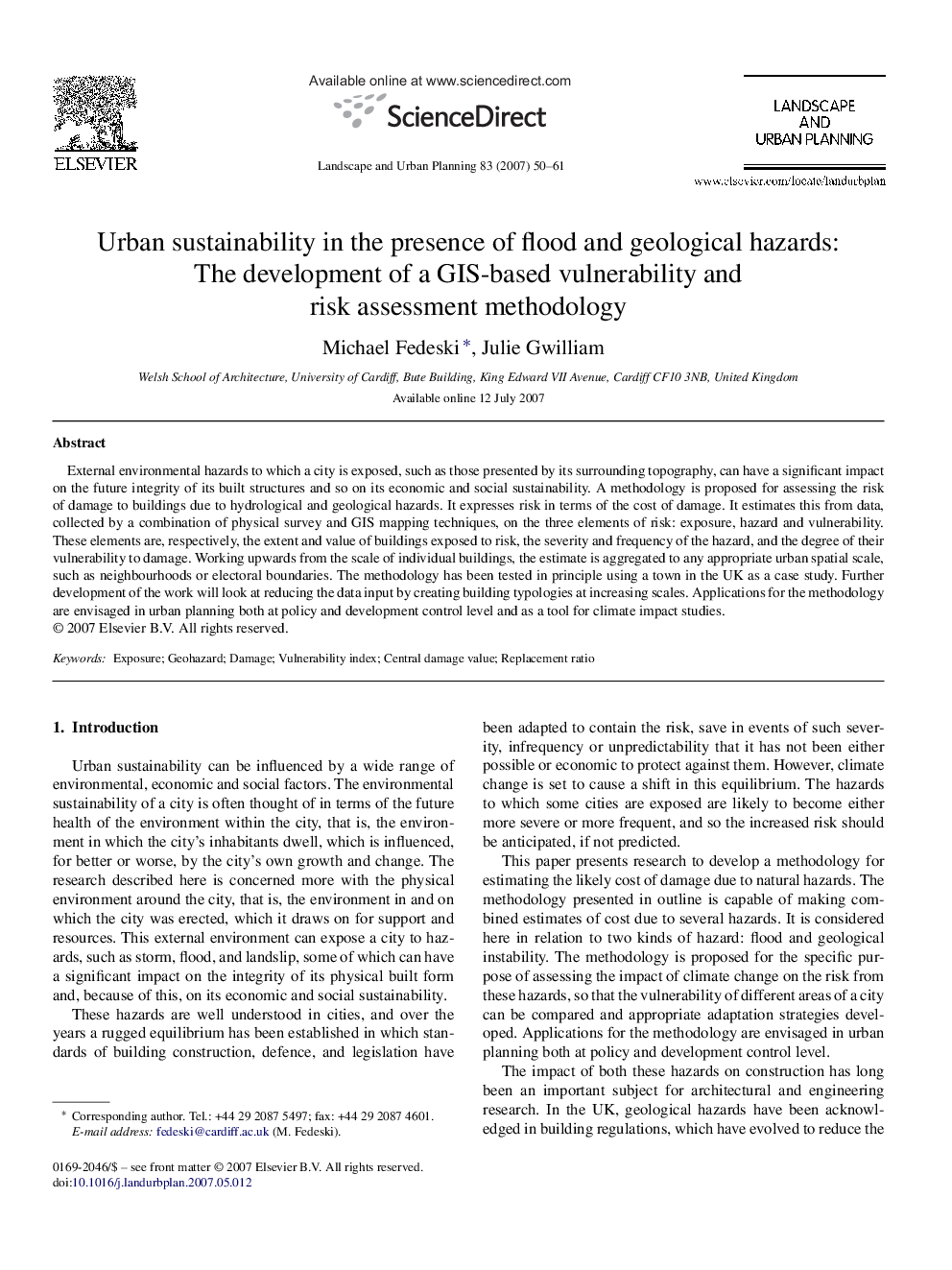| Article ID | Journal | Published Year | Pages | File Type |
|---|---|---|---|---|
| 1050546 | Landscape and Urban Planning | 2007 | 12 Pages |
External environmental hazards to which a city is exposed, such as those presented by its surrounding topography, can have a significant impact on the future integrity of its built structures and so on its economic and social sustainability. A methodology is proposed for assessing the risk of damage to buildings due to hydrological and geological hazards. It expresses risk in terms of the cost of damage. It estimates this from data, collected by a combination of physical survey and GIS mapping techniques, on the three elements of risk: exposure, hazard and vulnerability. These elements are, respectively, the extent and value of buildings exposed to risk, the severity and frequency of the hazard, and the degree of their vulnerability to damage. Working upwards from the scale of individual buildings, the estimate is aggregated to any appropriate urban spatial scale, such as neighbourhoods or electoral boundaries. The methodology has been tested in principle using a town in the UK as a case study. Further development of the work will look at reducing the data input by creating building typologies at increasing scales. Applications for the methodology are envisaged in urban planning both at policy and development control level and as a tool for climate impact studies.
